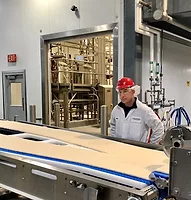Package Deal

The enormous amount of attention paid to ingredients in food and beverage by processors may have some overlooking an equally important element of the F&B experience: the container in which that food or beverage is sold. Packaging today plays many roles: carrier of F&B, protector of temperature-sensitive items, barrier for potential adulteration, manifestation of a brand’s sustainability initiatives and more.
In last month’s Food Engineering podcast, we spoke with Tyson Foods about their new case-ready meat plant in Utah. Case-ready means it’s packaged for purchase by the time it leaves the facility, destined for direct delivery to cold cases in retail outlets. One of the many forward-thinking elements to the plant is the ability to change out and upgrade packaging lines easily as that segment evolves and newer, more sustainable and cost-effective materials are introduced for case-ready meats. It’s a great example of a company understanding that packaging is not a static item, but always evolving.
In this issue, we dive into the many areas packaging can impact a food processing operation, and the corresponding trends driving this segment of the industry. We also look at packaging advances for alternative proteins and pet food—no longer ignored by shoppers seeking those items—plus technological advances in labeling and artificial intelligence that are helping processors pack their products in a smarter and more cost-efficient way.
It really is a package deal (pun intended) between processors and consumers, especially as end-users become more focused on purchasing products that match their lifestyles. If the F&B they want needs to be sustainable, environmentally friendly, high-quality and less wasteful, companies that expand on those desires into the product packaging will often have an advantage over the competition in today’s marketplace.
Looking for a reprint of this article?
From high-res PDFs to custom plaques, order your copy today!







